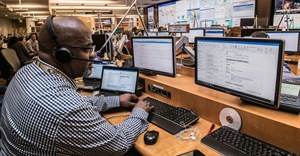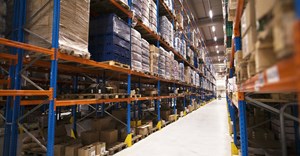Trending
Elections 2024
Jobs
- Warehouse General Worker George
- Warehouse Team Leader George
ERP enabling more efficient warehouse automation

Even though this is hardly new, the potential when paired with the previous two elements and enterprise resource planning (ERP) solutions is significant to enhance any shop floor environment.
Given how technology is evolving, today’s robots are significantly more intelligent than their predecessors. Even though cynics argue that this could negatively impact jobs, the reverse is true. Yes, the capabilities of robots on shop floors and in warehouses can easily reduce much of the human labour element, but it also provides manufacturers with the platform to upskill their workforce.
Being more productive
Like the efficiency improvements when businesses moved from fax machines to mobile phones, machine-learning and AI greatly enhance automation and provide the ability to react quicker, be more agile to market demands, and connect more easily to the Internet of Things (IoT) ecosystem.
And while robots certainly bring value for accountability, they must link to all facets of the digital and real-world environments. This is where ERP becomes increasingly essential in any modern shop floor or manufacturing environment.
Without having the ability to manage these components, link to the available data, and understand where efficiency gains are to be had, companies can easily lose traction to their competitors. ERP is an enabler that brings more dynamic integration from the shop floor and more effectively gives vital accountability (and traceability) for digitally-led businesses.
These efficiency improvements can also be felt in evolving into a more productive organisation. Thanks to IoT and the connectedness of manufacturing environments, employees, business partners, and suppliers can have real-time access to the shop floor through any device. This enables them to have access to stock levels, monitor deliveries, and other important elements like profitability, cash, and so on, directly from within the ERP system on their device.
Driving profits
In turn, this increased visibility of real-time data ensures a business can better manage operations across business units or locations, leading to improved profitability. Take the role of robots, machine-learning, and AI as an example. By freeing up employees from tasks, companies can upskill them to deliver more strategic value to the organisation.
There will always be a need for the creative and strategic value workers can provide. Through training and other skills development initiatives, this can be focused on better service delivery, leading to a likely increase in profits.
In a digital environment, automation takes many different forms. Therefore, a robust ERP solution is needed to ensure that the organisation can more easily accommodate the myriad of open architectures and solutions out there driving machine-learning, AI, and the like. In many respects, this adds a degree of future-proofing to a digital organisation as it is more easily able to adapt to any new innovations.
Modern business leaders are achieving benefits using readily available technology, such as drones, to reduce laborious tasks such as manual stock takes. This is not the case of science fiction but rather science fact as shop floors embrace a new level of sophistication thanks to the interoperability provided by modern ERP. All of this can easily be driven from the cloud and enable businesses to take advantage of IoT and shop floor automation to move their businesses forward.
All this requires an open mindset and willingness to embrace innovations, leverage ERP in different ways, and identify the new opportunities offered by a digital-driven warehouse.















